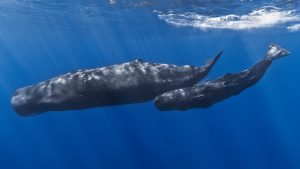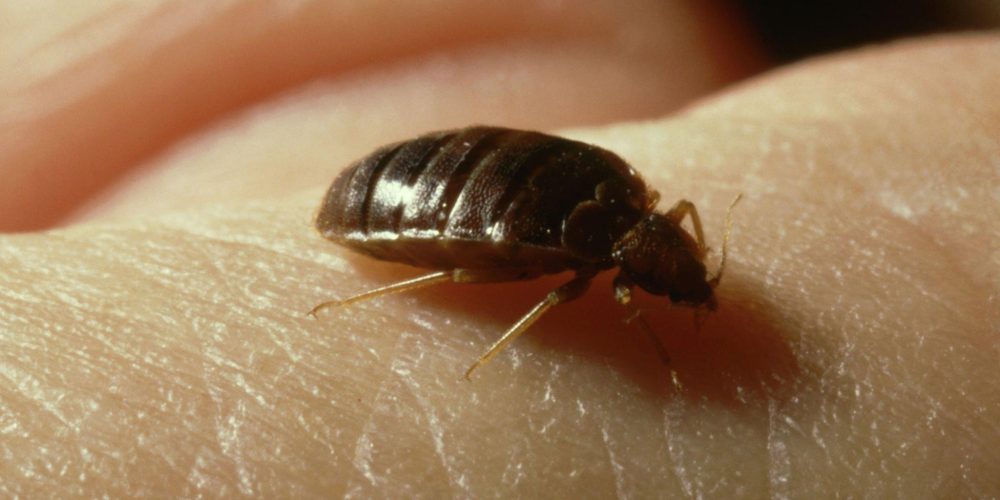71% of Earth’s total landmass is occupied by oceans. It is therefore not surprising that within these oceans lies one of the most magnificent animals to have ever graced our planet. One of the most interesting things about these cetacean leviathans is that very little is known about them despite our technological advancement. You really can’t blame the scientists because these whales are truly magnificent as they are known to descend to such unbelievable depths and remain under for so long. You know you can always count on us to bring you every known fact concerning the sperm whale and that’s what we’ll be doing in this article.
Sperm whales are one of the 90 species of whales, porpoises, and dolphins which are collectively referred to as cetaceans. From such a multitude of species, the sperm whale stands out in all respects! Physically, they can be easily identified by their proportionately large, square-shaped heads, narrow teeth-lined jaws, and a coloration that is often dark blue-grey but sometimes brownish. Behaviourally, they are often found as a pod of 15-20 individuals, which would often consist of mature females and their young calves.
They combine brain and power. By the way, did you know that the classic novel “Moby Dick” by Herman Melville was actually based on the story of an angry whale? History records that on the 20th of November, 1820, a massive-sized sperm whale deliberately rammed into a whaling vessel called The Essex. The whalers had to abandon the sinking vessel and embark on an arduous journey for survival.
Size and weight of sperm whales
Sperm whales are proportionally large in mass and weight. While female sperm whales are large, males are even larger and sometimes weigh twice as much as a female. Sperm whales generally have a length that measures between 50 and 60 feet (15 to 18 meters). They often weigh between 30,700 to 40,000 kilograms (or somewhere between 70,000 to 90,000 pounds). They are widely distributed in all of our oceans and have been living in them for the past 20 million years!
Pods consisting of adult females and young calves are often seen in tropical and subtropical waters. While females birth only one calf at a time, the pod would often consist of socially knitted adult females which raise the calfs through communal child care. Adult males are often solo, drifting and changing pods as they wish.
Life expectancy and skull
Sperm whales have a lifespan that is similar to that of a human being. They generally live to be 60 to 70 years old. It takes female sperm whales between 7 to 13 years to attain sexual maturity. If you thought this is too long, think again because males have even a longer sexual maturity timeline. It will often take male sperm whales as long as 10 to 18 years before attaining sexual maturity. While females become physically mature at just 30 to 35 years and attain menopause at 40, males will continue to grow and only become physically mature at around 50 years old.
Sexually mature males often do not participate in breeding until they are in their late 20s. Females are often pregnant for 14 to 16 months, after which they will birth one calf. At birth, the calf would often measure 13 feet (approximately 4 meters) and will continue to be taken care of by the community of adult females. Males, as early as 4 years old or as late as 21 years old, would leave the female pod and join a pod of other young adult males, more or less a school for bachelor sperm whales where they will be tutored in the necessary skills.
What about their diet? Since it can grow to incredible lengths and weigh so much, what do sperm whales eat in order to get so big? Sperm whales are predatory carnivores. They have a distinctly shaped mouth that features a narrow lower jaw that is lined with big, conical-shaped teeth. Each of the teeth is about 18 to 20 centimeters (approximately 7 to 8 inches) long. With the head constituting about one-third of its total body length, it is no wonder that the lower jaw houses about 36 to 50 teeth, with each tooth weighing about 2.2 pounds (about 1 kilogram).
Sperm whale and giant squid
They would often employ this distinctive array of teeth in hunting sharks (such as the megamouth shark), fishes, octopi, skates, and rays. However, their favorite meal is the giant squid. And do you know where the giant squid is often found in the ocean? Deep down! Sperm whales would often dive into depths of up to 3,500 feet (over 1 km) just to feed on their much favored giant squid. In the process of diving, hunting, and attacking at such depths, the clock continues to tick. Hence, sperm whales can stay submerged for up to 90 minutes at a time and stay at the surface for just 10 minutes, during which their heart beats only once every 10 seconds.
The depths of the ocean where sperm whales hunt are dark since sunlight cannot penetrate to such depths. Hence, the sperm whale makes up for the poor visibility by hunting through the use of echolocation. Echolocation is the process in which an animal (such as the sperm whale) emits sounds which travel underwater until the sound waves hit an object and then bounces back to the sender of the sound, thereby giving vital information such as the size, location, and shape of the object/animal detected.
It is powered by a powerful fluke that could measure 16 feet (or 5 meters) from one tip to the other. It dives so deep and cruises at speeds of up to 8 km/h (about 5 mph). If need be for speed, such as during hunting, it can attain speeds of up to 40 km/h (25 mph). They also consume about 900 kilograms (or 2,000 pounds) of food a day! By the way, there’s been no record of a sperm whale ever eating humans because we just aren’t part of their menu. However, their loud clicking sounds that they use for communicating can be indeed harmful, even deadly, to humans. So you have to be very careful if you swim with them. Therefore, it’s best to not get too close to these fascinating animals.
Are sperm whales endangered?
Given the size, teeth, and diving capabilities of sperm whales, they have very few natural predators. Orcas are their main natural predators. But young sperm whales are known to sometimes be hunted by false killer whales and pilot whales. However, their greatest threat was and remains to this day — humans! During the commercial whaling centuries (17th to early 20th century), humans overhunted them for the booming oil trade. Since 1996, they were and continue to be listed as “vulnerable” on the International Union for Conservation of Nature’s (IUCN) list.
In the U.S., they are listed as “endangered” and protected by the Endangered Species Act (ESA) and the Marine Mammal Protection Act (MMPA). They were majorly hunted for their spermaceti and ambergris. Spermaceti is the organ located in the whale’s head containing a whitish substance of about 2,000 liters (530 gallons) which 17th century whalers thought was whale sperm but which is unlikely. To this day, scientists are yet to ascertain the function of this spermaceti from which the whale got its name in the first place. Some suggest that it is for sonar tracking; others say it is for buoyancy, but no one really knows for sure.
The sperm whale is truly an exceptional animal that has gone through quite a lot of unpalatable experiences in the hands of humans. In centuries past, they were hunted in hundreds of thousands. Today, they face even greater threats from humans in the form of marine debris, oil spills, and contaminants, vessel strikes, noise pollution, and entanglements with fishing nets. It will be too sad to see them become extinct.
















